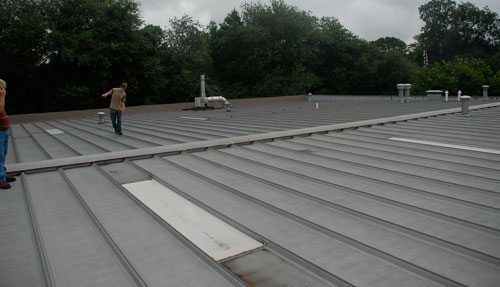

The rate of thermal movement varies by the type of metal installed and temperature of the base metal. Conversely, as the temperature decreases, the atomic particles slow down and the liquid metal contracts. As temperature increases, the atomic particles in the mercury move faster, causing it to expand.

When thinking about thermal movement, it helps to visualize the movement of liquid mercury in an old-fashioned thermometer. Failures associated with thermal movement also often are misdiagnosed and blame is often placed upon poor workmanship or improper soldering. For that matter, a homeowner or building owner could have sold the property, as well. In addition, failures caused by thermal movement usually occur over dozens of thermal cycles or seasons, and the original installers or designers sometimes are not around to witness the failures. It’s not likely, for example, for a roofing contractor to notice a ¼-inch expansion in an aluminum panel. Anything that is not visible to the naked eye can be overlooked. The principles behind thermal movement are easily misunderstood.
FLAT ROOF SYSTEMS RESIDENTIAL INSTALL
Unfortunately, when thermal movement is restricted, contractors may witness failures in as little as five years.Ĭontractors that install metal roof systems on steep-slope structures must understand the direction and effect of thermal movement on various metal types. The one thing all long-lasting systems such as standing-seam, flat-lock, and built-in gutters have in common is their ability to accommodate thermal movement. It’s not uncommon for some of these systems to date to World War II. Roofing contractors often are amazed at the time-tested craftsmanship of sheet-metal systems that are removed from historical structures. Understanding thermal movement in residential metal roof systems is key to long-term performance


 0 kommentar(er)
0 kommentar(er)
